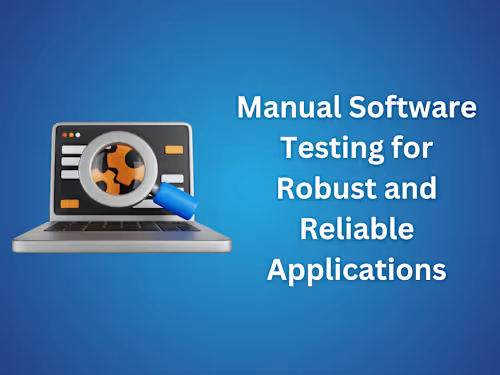
Manual Software Testing for Robust and Reliable Applications
Contact for pricing
About this service
Summary
What's included
Documentation
1) SRS 2) Instruction manual 3) RTM (Requirement Traceability Matrix) 4) Compliance with technical documentation
Test Plan
A detailed and tailored test plan covering all your requirements.
Detailed Test Cases
1) Creation of thorough and precise test cases covering all functional and non-functional requirements. 2) Test cases will be documented with clear steps and expected results.
Test Execution Reports
1) Execution of all test cases and documenting results. 2) Daily and weekly test execution reports including pass/fail status and observations.
Bug Reports & Issue Tracking
1) Detailed bug reports including severity, priority, steps to reproduce, screenshots, and videos (if applicable). 2) Continuous tracking and updating of issues using tools like JIRA, Bugzilla, Trello, etc.
Usability Testing Insights
1) Evaluation of the user interface and user experience. 2) Feedback on usability issues with suggestions for improvements.
Regression Testing
1) Re-testing of existing functionalities to ensure that new changes have not introduced any new bugs. 2) Comprehensive regression testing reports.
Cross-Browser & Cross-Platform Testing
1) Testing the application across various browsers and platforms to ensure compatibility. 2) Detailed reports on browser and platform-specific issues.
Ad-Hoc and Exploratory Testing
1) Unstructured testing to identify defects that may not be covered by predefined test cases. 2) Detailed findings and reports from exploratory testing sessions.
Final Test Summary Report
1) A comprehensive summary of all manual testing activities, including test cases executed, defects found, severity of issues, and overall quality assessment. 2) Executive summary for stakeholders highlighting key results and next steps.





